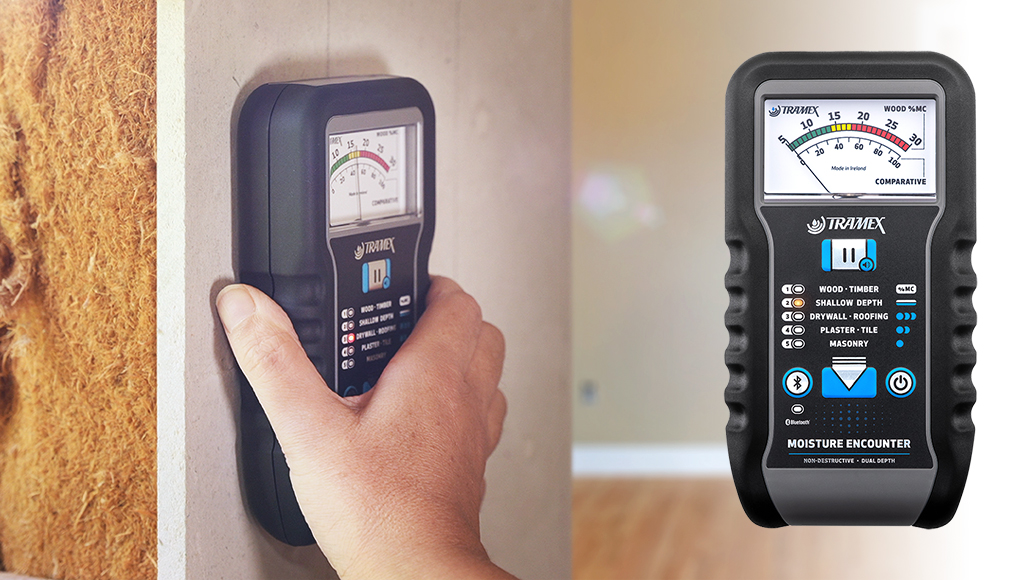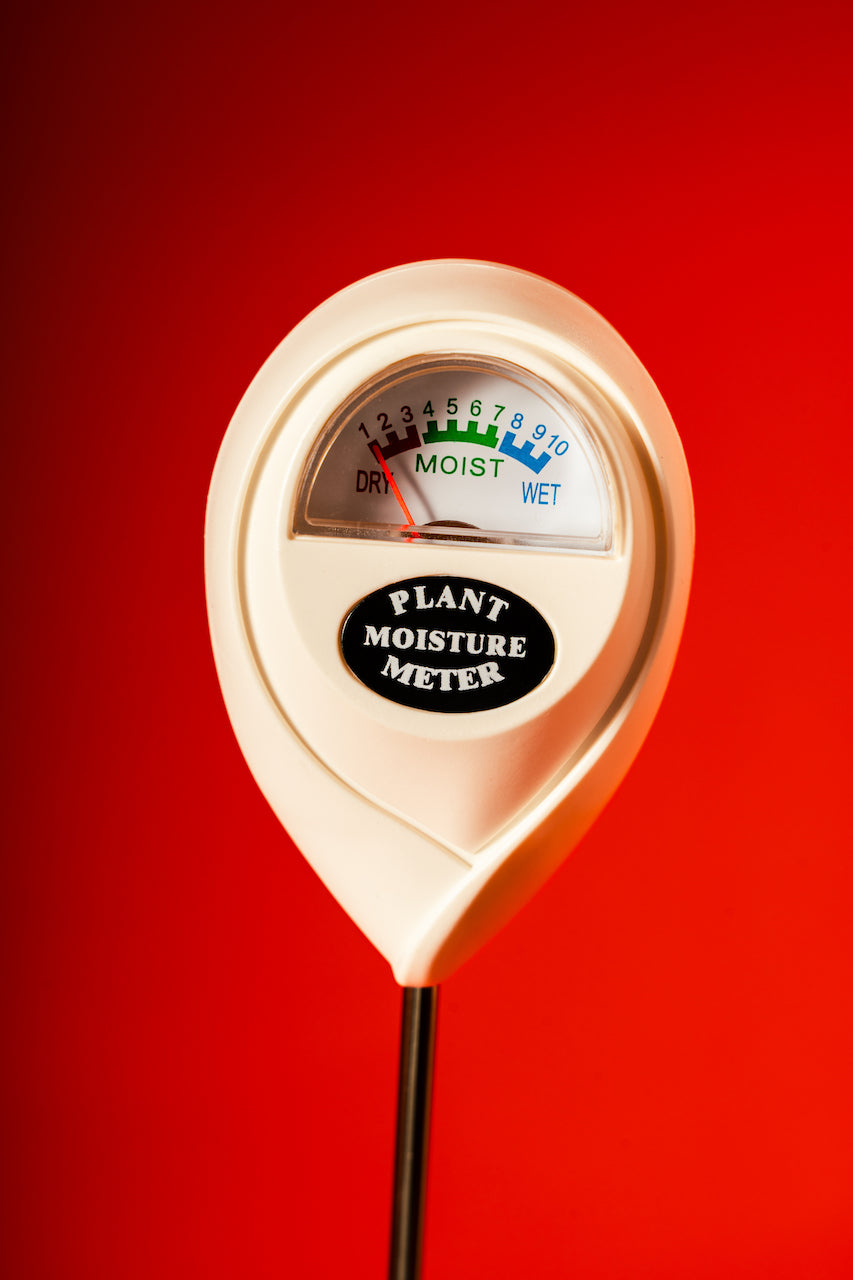The Science Behind Moisture Meters: How They Function and Why They're Essential
The Science Behind Moisture Meters: How They Function and Why They're Essential
Blog Article
Look Into the Globe of Moisture Meters: Whatever You Need to Know
In the realm of moisture meters lies a globe of precision and functionality that usually goes undetected. These tools, while apparently simple, hold a riches of information that can considerably impact various industries and applications. Understanding how moisture meters run, the different types available, and their varied uses can clarify their relevance in ensuring top quality and effectiveness. By checking out the complexities of dampness meters, one can discover an important tool that goes beyond simple measurement, supplying understandings that can make a substantial distinction in many fields.
Exactly How Wetness Meters Work
Dampness meters run by determining the electrical conductivity or capacitance of products to determine the dampness material present - Moisture Meter. These meters are indispensable tools across different industries, including construction, agriculture, and woodworking. By making use of different approaches such as pinless or pin-type technology, wetness meters give accurate readings that assist specialists make informed choices
Pin-type dampness meters function by putting the sharp pins right into the product being checked. On the various other hand, pinless dampness meters utilize electro-magnetic signals to check a larger area without causing any damage to the material's surface.
Despite the method used, dampness meters play an important function in stopping problems such as mold growth, structural damage, or item issues triggered by excess wetness. Comprehending how these meters work is essential for making sure the top quality and stability of materials in various applications.
Sorts Of Dampness Meters
Provided the crucial function wetness meters play in various markets, it is necessary to understand the various types offered to professionals for properly evaluating moisture degrees. There are primarily 2 main sorts of moisture meters: pinless and pin-type moisture meters.
Pin-type dampness meters utilize two pins that are placed into the material being tested to gauge the electric resistance in between them. This approach is generally made use of for wood, drywall, and various other building materials. Pin-type meters give accurate analyses at specific midsts, making them perfect for recognizing moisture slopes.
On the various other hand, pinless moisture meters utilize electro-magnetic sensor plates to scan a bigger location of the material without creating any type of damages. This kind is suitable for swiftly scanning large areas and is generally used for flooring, wall surfaces, and ceilings. Pinless meters are convenient for taking analyses on finished surface areas without leaving any kind of visible marks.
Both types of wetness meters have their benefits and are picked based on the particular requirements of the task handy. Recognizing the differences between these types is critical for professionals to make accurate wetness analyses.
Applications Across Industries
With diverse performances, wetness meters discover extensive application throughout different sectors, assisting professionals in making certain optimum problems for frameworks and products. In the farming field, dampness meters are important for figuring out the dampness web content in grains, seeds, and hay, ensuring quality assurance and preventing here are the findings mold growth. Construction experts count on wetness meters to analyze the dampness degrees in building materials like wood, concrete, and drywall, which is vital for keeping architectural integrity and preventing issues like rot or mold and mildew. The floor covering sector makes use of wetness meters to measure the wetness content in subfloors prior to mounting different flooring, stopping expensive damages because of excess moisture. Moreover, in the food sector, dampness meters are utilized to monitor and regulate moisture degrees in products such as grains, nuts, and dried out fruits to keep freshness and quality. In addition, wetness meters play a vital duty in the remediation and damage control market by aiding experts address and determine water damage in buildings immediately. Across these diverse sectors, moisture meters are important tools for making sure the quality, safety and security, and longevity of different products and products.
Tips for Utilizing Wetness Meters
When gauging the dampness web content in numerous materials,Use the wetness meter's calibration settings to guarantee precise readings. Calibration is critical for the correct performance of a wetness meter. Before each use, it is recommended to check and adjust the calibration setups according to the Read Full Report details product being tested. In addition, ensure the meter is established to the right wetness variety for the material you are measuring to get one of the most specific outcomes.

When utilizing a pin-type moisture meter, insert the pins to the appropriate deepness advised for the product being evaluated. This makes sure that the wetness readings are taken from the correct deepness within the material, offering a more accurate depiction of its wetness material. For pinless moisture meters, remember to keep correct call with the material's surface to obtain dependable analyses.

On a regular basis inspect and change the batteries in your wetness meter to stop inaccurate readings because of reduced power. Shop the meter in a completely dry and secure location when not being used to prolong its life-span and preserve its precision. By following these tips, you can optimize the efficiency of your moisture meter and acquire specific moisture web content measurements across various materials.

Upkeep and Calibration
To guarantee the precision of moisture material measurements, routine upkeep and calibration of the wetness meter are essential actions in its proper functioning. Maintenance entails keeping the wetness meter tidy and complimentary from particles that can affect its analyses. It is essential to comply with the supplier's guidelines for cleaning up to avoid damages to the tool. Additionally, routine calibration is essential to verify the accuracy of the analyses. Calibration readjusts the moisture meter to make sure that it gives constant and reliable outcomes.
Calibration must be done periodically, especially if the moisture meter is made use of often or in critical applications where exact measurements are needed. By calibrating the dampness and preserving meter frequently, individuals can rely on the precision of the moisture web content dimensions obtained.
Verdict
Finally, moisture meters play an important role in numerous industries by accurately determining the moisture web content of materials. Recognizing exactly how these devices function, the different kinds offered, and proper upkeep and calibration are vital for getting reliable outcomes. Whether in agriculture, production, or building and construction, using wetness meters aids guarantee top quality control and efficiency in processes.
Building and construction professionals depend on dampness meters to evaluate the wetness levels in building materials like wood, drywall, and concrete, which is vital for maintaining structural stability and preventing concerns like rot or mold. The flooring market makes use of moisture meters to determine the dampness content in subfloors before setting up numerous floor coverings, stopping pricey problems due to excess moisture.Make use of the moisture meter's calibration settings to make certain accurate readings when determining the wetness web content in numerous materials. By following these ideas, you can optimize the efficiency of helpful hints your moisture meter and obtain exact wetness web content measurements across different materials.
In final thought, wetness meters play a crucial function in different markets by properly gauging the moisture content of materials.
Report this page